The Inti Raymi, also known as the Festival of the Sun, was the most important celebration of the Inca Empire. It takes place every June 24 in the city of Cusco and is dedicated to the sun god Inti. The festivities involved feasting, dances, music, and animal sacrifices to thank Inti for the year's harvest and to ask for his blessing for the upcoming one. But, did you know that it was once forbidden to be considered “pagan”? Today, this festival brings together thousands of people, including artists and tourists from all over the world.
Keep reading to learn more about the Inti Raymi.
What is Inti Raymi?
The Inti Raymi, or Festival of the Sun, was the largest and most significant festivity during the Inca Empire. It was a religious celebration dedicated to the Sun God, Inti, who was the most revered deity in the Inca Religion. The main ceremony was held during the winter solstice to mark the beginning of the year.
According to Inca tradition, Inti Raymi was created by the Inca Pachacutec in 1430 to celebrate the first day of the New Year in the Inca calendar. Today, the Inti Raymi is celebrated every June 24th in Cusco, the former Capital of the Inca Empire. The modern ceremony is a theatrical representation of the ancient rituals, with hundreds of artists dressed up in colorful costumes to emulate the Inca times.
Why June 24? - This is the shortest day of the year and the beginning of the winter solstice in the Southern Hemisphere. On this day, the sun is farthest from the Earth, and the Incas celebrated it to plead for the return of the sun and longer days.
Approximately 25,000 people, including actors, dancers, and musicians, dressed in traditional attire, perform different activities outside the Qoricancha, Sacsayhuaman, and the Main Square of Cusco.
Many speeches are delivered during the festival in Quechua or Runa Simi, the Incan language. Quechua is a unifying and widely spoken language, and it's one of three official languages in Peru.
›› Learn more about the Language of the Incas
Inti Raymi History
Inti Raymi originally began during the time of the Inca Empire, celebrated every June 21st, the winter solstice, and the shortest day of the year. It was a sacred moment to honor Inti, the sun god, thank him for the harvest, and ask for blessings for the coming year. The festival took place in Cusco and lasted for nine days, filled with ceremonies, dances, processions, and food.
It all started with a great procession. The Inca, carried on a golden throne, led the way from the Temple of the Sun (Coricancha) to the fortress of Sacsayhuaman. He was followed by nobles and priests dressed in ceremonial clothes and holding golden objects that symbolized the sun. Once at the fortress, the Inca lit a sacred fire using a mirror to reflect the sun’s rays. The flame was then spread to all the temples across the empire, symbolizing the rebirth of the sun.
Llamas were offered to Inti. Priests examined their organs to look for signs about the future. Music, dancing, and chicha (corn beer) were also part of the celebration, and people gathered for a massive feast. While the core rituals were performed by the Inca, his wife, the Coyas, and the nobility, the wider community took part in the public festivities.
Inti Raymi helped the Inca people reconnect with their main deity and renew the bond between Inti and the ruler, believed to be his living representative on Earth.
Why was Inti Raymi banned?
The Spanish Conquistadors banned the festival in 1572, as they sought to convert the native people to Catholicism and suppress their traditional religious practices. However, in 1944, the festival was revived in a historical reenactment form and was first staged to commemorate and relive the actual celebration.
Inti Raymi Festival today
Although the original festival took place on June 21st, modern Inti Raymi happens on June 24th. It was mainly because of politics, as back in the 1920s, President Leguía decided to declare June 24th as the “Day of the Indian.” Since it also matched the Catholic feast of Saint John, which was already a public holiday, it made organizing the event easier. So, the most sacred date in the Inca calendar got shifted for convenience.
Today, modern celebration kicks off early at Qoricancha, the ancient Temple of the Sun, now Santo Domingo Convent. Actors in full Inca dress bring the ritual to life. The Sapa Inca, followed by nobles and priests, steps forward to greet the sun and speak to his people.
The procession then moves to the main square, Plaza de Armas, where the Inca calls on Inti to guide and protect his children. Crowds fill the plaza, watching dances, listening to the Quechua speeches, and taking in the atmosphere.
By afternoon, everyone heads up to Sacsayhuaman for the final act. It’s a massive open-air performance: prayers, offerings, music, and the symbolic sacrifice of a llama (no real animals harmed). Everything is done in Quechua, the language of the Inca, and the ceremony follows the traditional rituals as closely as possible.
While the festival is a reenactment, rather than a religious ceremony, it’s still an important cultural event. It attracts thousands of tourists and reminds Peruvians where they come from—and lets them celebrate it with pride.
Declared a Cultural Heritage
Despite the creeping in of globalization, the Inca's descendants have successfully preserved their cultural expression with pride. On March 2nd, 2001, the Inti Raymi Festival was declared a Cultural Heritage of the Nation, and it's now organized by the Provincial Municipality of Cusco.
The Festival has also become a major tourist attraction in Peru, drawing visitors from around the world. This not only supports the local economy but also raises international awareness and appreciation of the rich cultural heritage of the Andean people.
How is Inti Raymi Festival Celebrated?
Inti Raymi's preparation begins days before, but the full celebration takes place on a single day: June 24th. The ceremony unfolds in three important locations in Cusco: Qoricancha, the Main Square (Plaza de Armas), and the Sacsayhuaman fortress.
9:00 am - Qoricancha (Temple of the Sun)
The day begins at the gardens outside Qoricancha Temple. Here, the Inca, the Qoya, and the Royalty salute the god Inti, invoking the success of the ceremony. This part sets the tone for the entire day.
"Oh, sun god, our father! Powerful Sun of eternal happiness, warm source, the principle of life! From this, your sacred mansion in Cusco, where you live with the Moon, Lightning, and Thunder....”
Although there's only one stand with seats, there is plenty of standing room with great views of the show. Make sure to arrive early if you want to get a good spot!
10:30 am - Cusco Main Square
After Qoricancha, the Inca and his royal entourage march through the streets of Cusco, like Loreto, until they arrive at the Plaza de Armas (or Aucaypata). Ñustas, Aqllas (chosen women), and the entire imperial army are already waiting. The Inca performs the traditional Coca ceremony and asks the Apus for guidance and strength.
While the center of the plaza is closed off, you can still find spots around the colonial arcades. Just keep in mind that due to the limited space in the plaza, you need to be prepared to stand in crowds.
›› Tip: If you plan to see the Inti Raymi, book a balcony seat at a local café. Enjoy the drink, and watch from there!
1:45 pm – Sacsayhuaman Esplanade
Following the Coca ceremony at Aucaypata, the cast heads towards the esplanade of Sacsayhuaman, where around 80,000 people and approximately 3,500 tourists who purchased their seats in the stands installed on the esplanade await the central ceremony.
Here, the Inca and his priests lead the most symbolic rituals of the day, accompanied by warriors, dancers, and musicians. It's the most intense and visually striking part of the celebration.
Locals who can't afford high prices choose to watch Inti Raymi from two hills that overlook the place. But the best option is to buy a ticket in advance and enjoy grandstand seating. Make sure to arrive early and come prepared for the sun!
How to experience the Inti Raymi?
There are two ways you can experience the Inti Raymi Celebration in Cusco:
- Book tickets in advance to access reserved seating (especially in Sacsayhuaman).
- Join the crowds and experience it alongside locals; it’s free and gives you a real sense of the festival’s cultural weight.
Inti Raymi 2026 Itinerary
| Time | Event and Location |
| 9:00 am | Opening Ceremony at Qoricancha |
| 10:30 am | Procession through Cusco Main Square |
| 1:45 pm | Central Ceremony at Sacsayhuaman |
Where to buy tickets for Inti Raymi 2026?
You can purchase tickets online through the Teleticket website. Prices vary depending on the seating zone and comfort level you choose.
Prepare to be in the crowds and bring everything you need for the day, including plenty of food, water, and sun protection! It's first come, first served!
Seating Distribution
There are three seating zones across the stage at Sacsayhuaman:
🟩Green Zone: General public
🟧Orange Zone: VIP section
🟥Red Zone: VIP section
Qoricancha Location: Only one stage applies at the Qoricancha site.
Why should you go to the Festival of the Sun?
Inti Raymi is celebrated in the city of Cusco, which is a major destination for history lovers due to its culture, museums, archaeological sites, natural beauty, and extremely friendly people. During the festival, thousands of people, including both locals and tourists from around the world, gather to walk through the fascinating streets of Cusco and witness the amazing staging of the Inti Raymi.
This festival offers a great opportunity to experience the city’s authentic art and folklore performances. Here are some other reasons why you should not miss the Festival of the Sun:
1. Cultural Experience
Attending the Inti Raymi festival provides a deeply enriching cultural experience. As one of Peru's most significant traditional celebrations, the festival allows visitors to immerse themselves in the rich heritage of the Andean people and their Inca ancestors.
2. Spectacular Performances
The festival includes vibrant and colorful performances, with hundreds of performers adorned in traditional Inca costumes and jewelry. The theatrical reenactment of ancient rituals is a grand spectacle involving music, dance, processions, and even a simulated llama sacrifice. You'd be happy to know that there are no real sacrifices anymore.
3. Historical Significance
The festival takes place in historic locations in Cusco, including the ancient Inca Temple of the Sun (Qoricancha), the city's Main Square (Plaza de Armas), and the Sacsayhuaman archaeological site. This allows visitors to explore these significant sites while experiencing the festival.
4. Beautiful Scenery
The festival takes place in and around Cusco, a city that sits high in the Andes Mountains. The city and its surroundings offer breathtaking scenery; the festival is an excellent reason to visit this beautiful part of the world.
5. Meet New People
This event attracts visitors worldwide, making it a great place to meet and interact with people from diverse cultures and backgrounds. It also provides a chance to connect with the local people and learn about their customs and way of life.
6. Photographic Opportunities
With its colorful costumes, dramatic performances, and historical settings, the festival offers fantastic opportunities for photography lovers.
Inti Raymi FAQs
What is the Inti Raymi festival?
Inti Raymi is a traditional Incan festival that celebrates the Sun God, Inti. It is held annually on June 24th in Cusco, Peru. The festival involves music, dancing, processions, and ritualistic ceremonies.
When is the Inti Raymi festival celebrated?
Inti Raymi is celebrated annually on June 24th, which is around the time of the winter solstice in the Southern Hemisphere.
Where does the Inti Raymi festival take place?
The festival takes place in Cusco, Peru. The main ceremonies are held in the fortress of Sacsayhuamán, which is just outside of the city.
How long is the Inti Raymi?
The festival lasts for one day only (June 24th). The ceremony starts at 9:00 at Qoricancha and ends around 3:00 pm at the Sacsayhuaman esplanade.
Why is the Inti Raymi festival celebrated?
Inti Raymi is a religious ceremony of the Inca Empire in honor of the god Inti, one of the most venerated deities in the Inca religion. It was the celebration of the Winter Solstice - the shortest day of the year between sunrise and sunset.
What happens during Inti Raymi?
The modern Inti Raymi festival involves a reenactment of traditional Inca rituals, including a procession, music, dancing, and feasting. The most important part of the event is the theatrical representation of ancient rituals performed at the Sacsayhuaman archaeological site.
Was Inti Raymi banned?
The Spanish conquerors banned Inti Raymi in the 16th century due to their efforts to convert the indigenous people to Catholicism. However, the festival was revived in the 20th century and is now celebrated as a cultural event.
How can I attend the Inti Raymi festival?
To attend the Inti Raymi festival, you need to travel to Cusco, Peru, around June 24th. You can watch the processions and ceremonies for free, but if you want a seat in the main viewing area at Sacsayhuamán, you will need to buy a ticket.
Where to buy a ticket for the Inti Raymi?
You can buy your Inti Raymi ticket at the Teleticket website. The prices vary depending on the location and the type of seats you will choose.
Can tourists attend Inti Raymi?
Yes, tourists can attend Inti Raymi. In fact, it's a major tourist attraction in Cusco. However, visitors are asked to respect the cultural significance of the event.
What does Inti Raymi mean to the people of Peru today?
For many Peruvians, especially those of indigenous descent, Inti Raymi is a celebration of their cultural heritage and a way to connect with their Inca roots. It's also an important event for promoting tourism in the region.
How can I best experience Inti Raymi?
To experience Inti Raymi, plan to visit Cusco in late June. The festival is free to watch in the streets, but ticketed seats are available at the main ceremony site in Sacsayhuaman. Booking in advance is recommended due to the popularity of the event.
Is the Inti Raymi festival safe to attend?
Yes, the Inti Raymi festival is generally safe to attend. However, like any large public gathering, attendees are encouraged to be aware of their surroundings and take standard travel precautions.
Can I take photographs during the festival?
Yes, you can take photographs during the festival. However, it's important to respect the performers and other attendees by not disrupting the ceremonies.
What should I wear to the Inti Raymi festival?
As the festival takes place in winter, it's a good idea to dress in layers. The mornings can be cool, but it can become quite warm in the afternoon sun. Comfortable shoes are also recommended as you may need to stand or walk for long periods.
What is the history of the Inti Raymi festival?
The Inti Raymi festival was a religious ceremony of the Inca Empire that has been revived in modern times. It was originally celebrated by the Inca, their nobles, and their subjects in the city of Cusco. With the Spanish conquest, the festival was banned for its pagan roots but was revived in the 20th century and is now one of Peru's most popular festivals.
Don't miss these tours in Cusco:

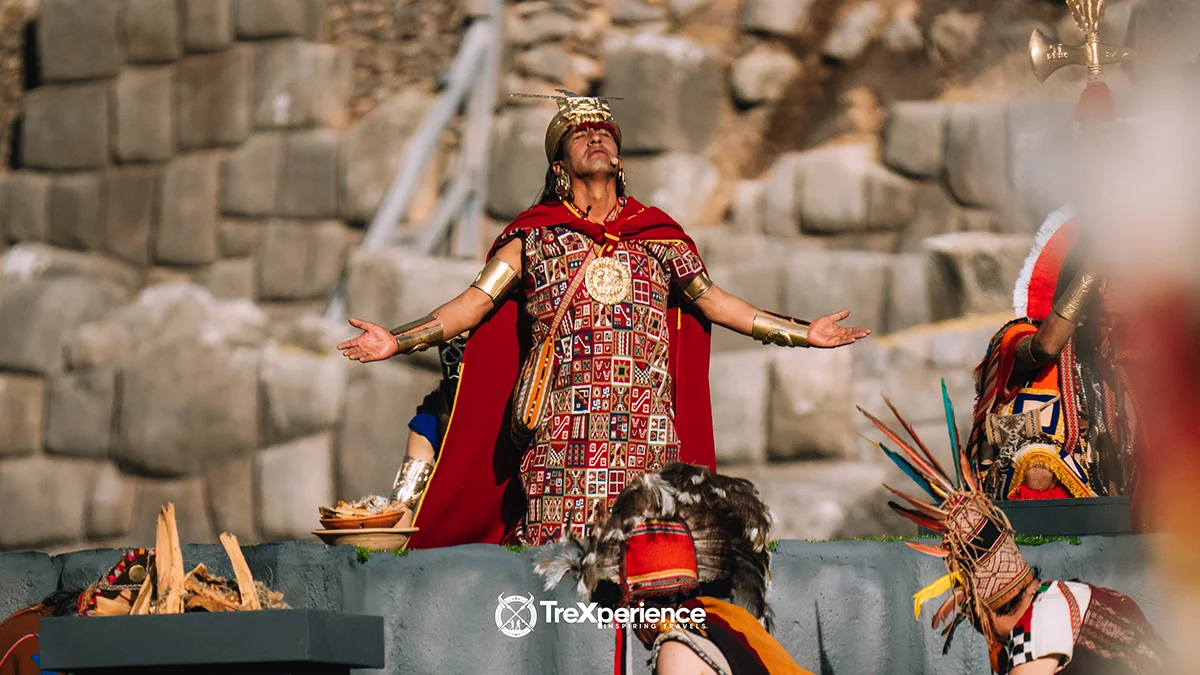
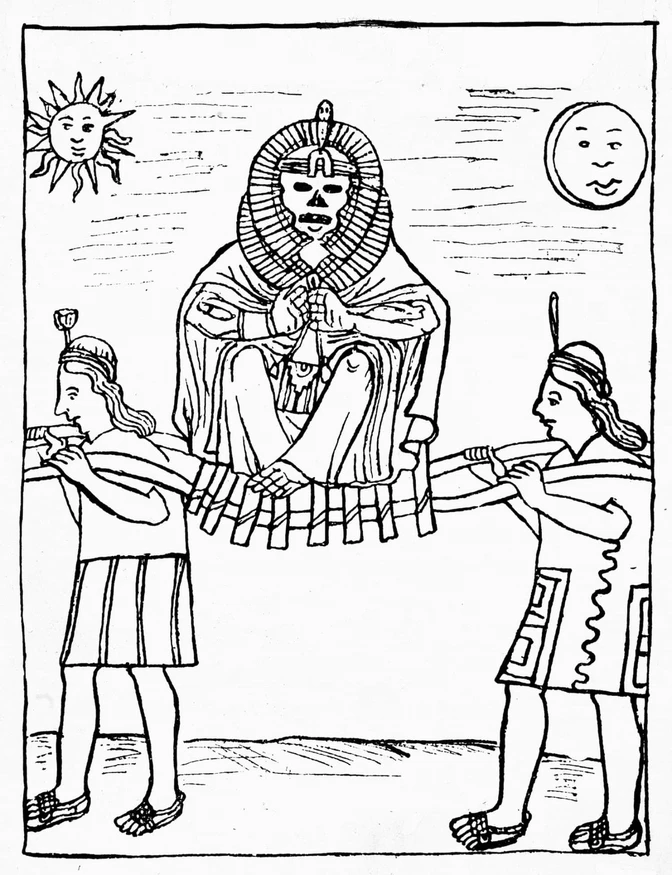
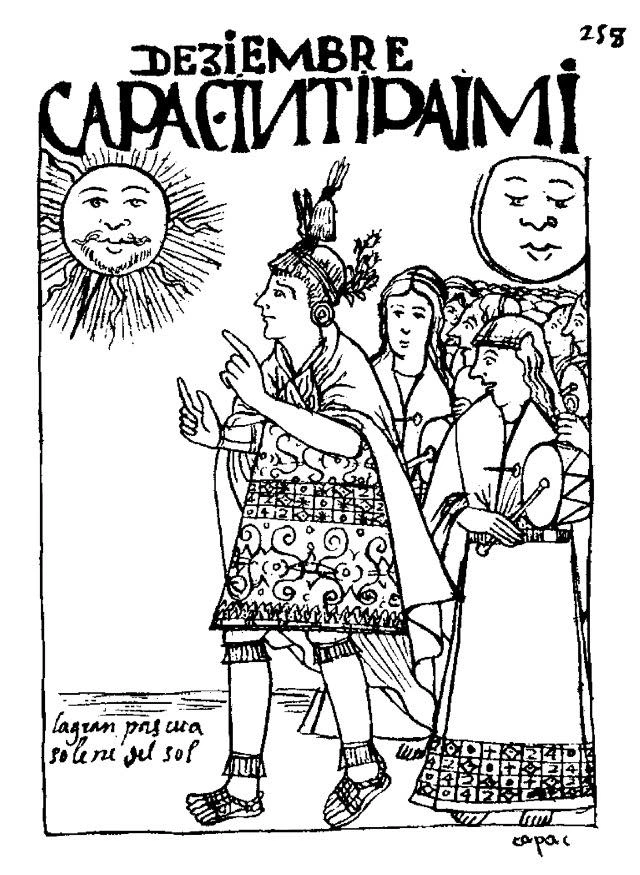
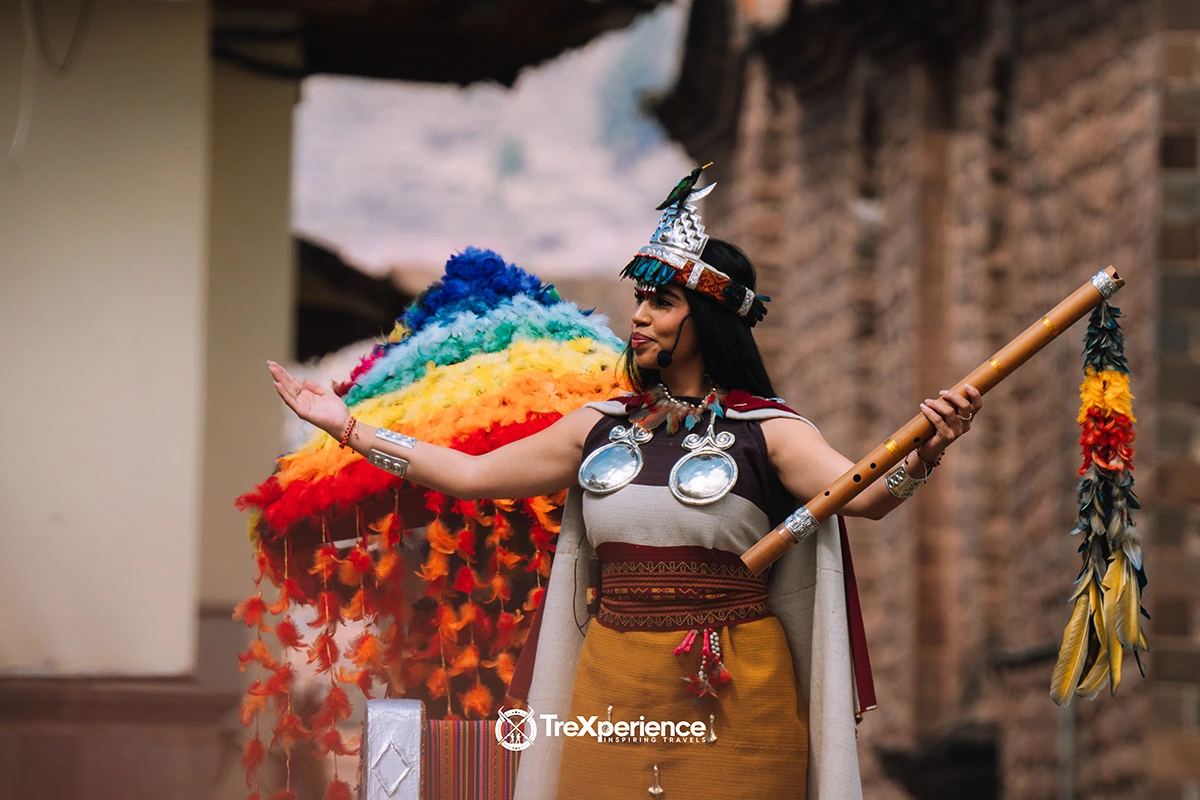
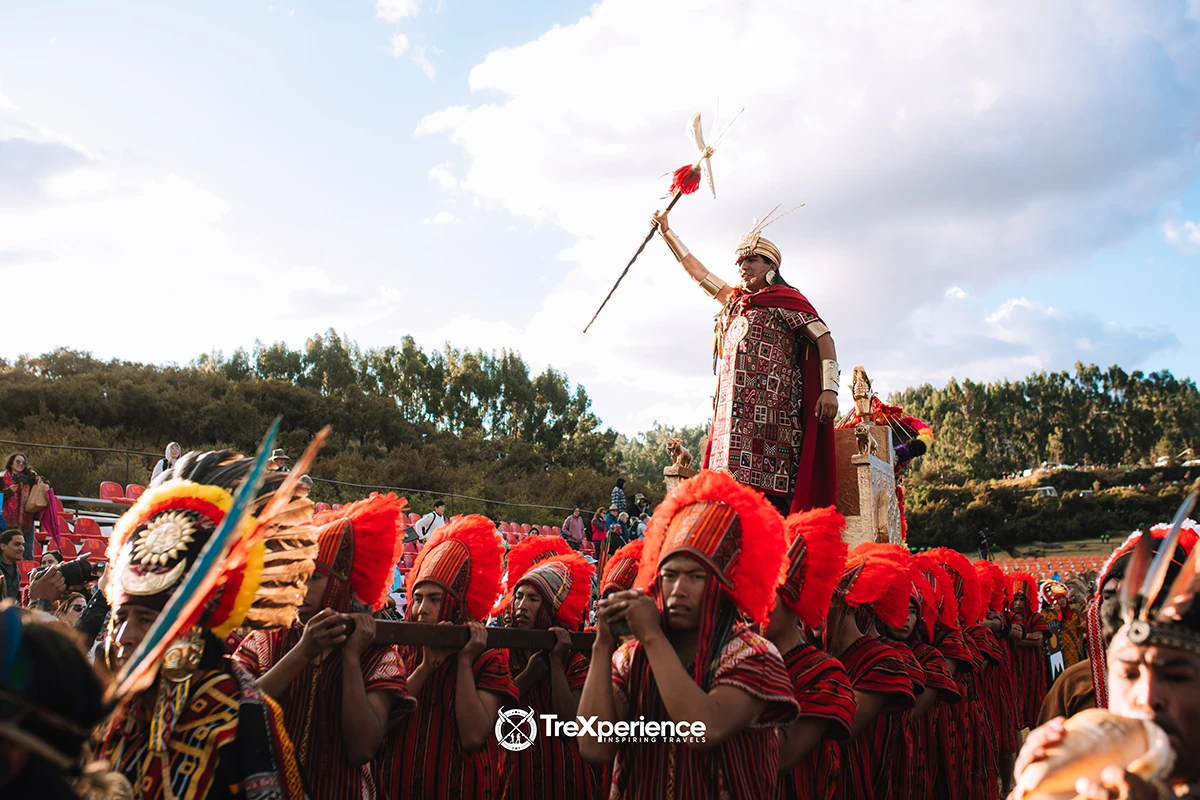
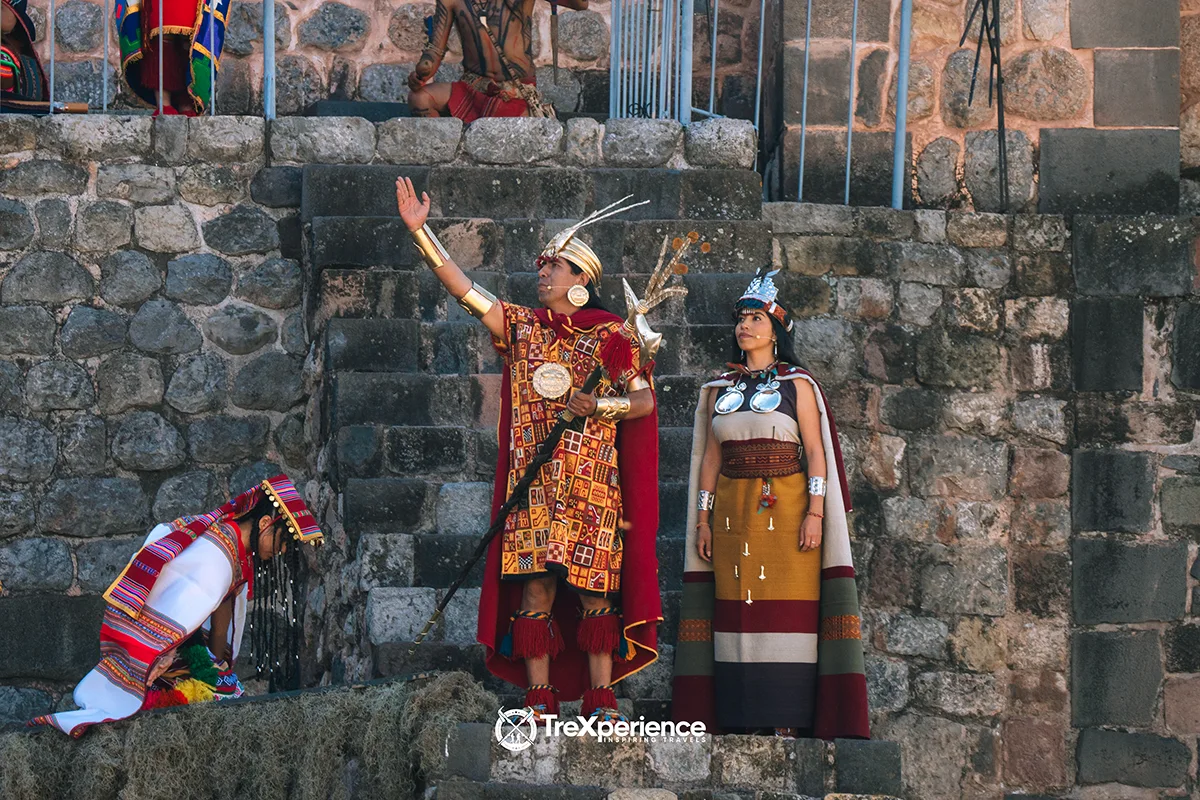
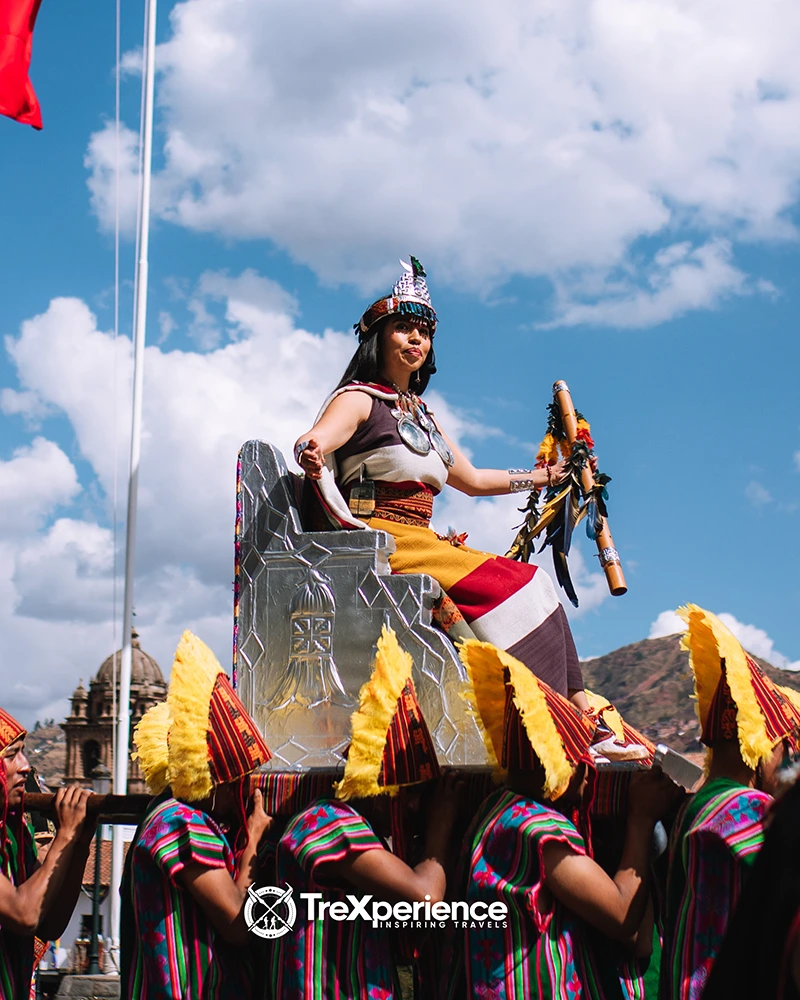
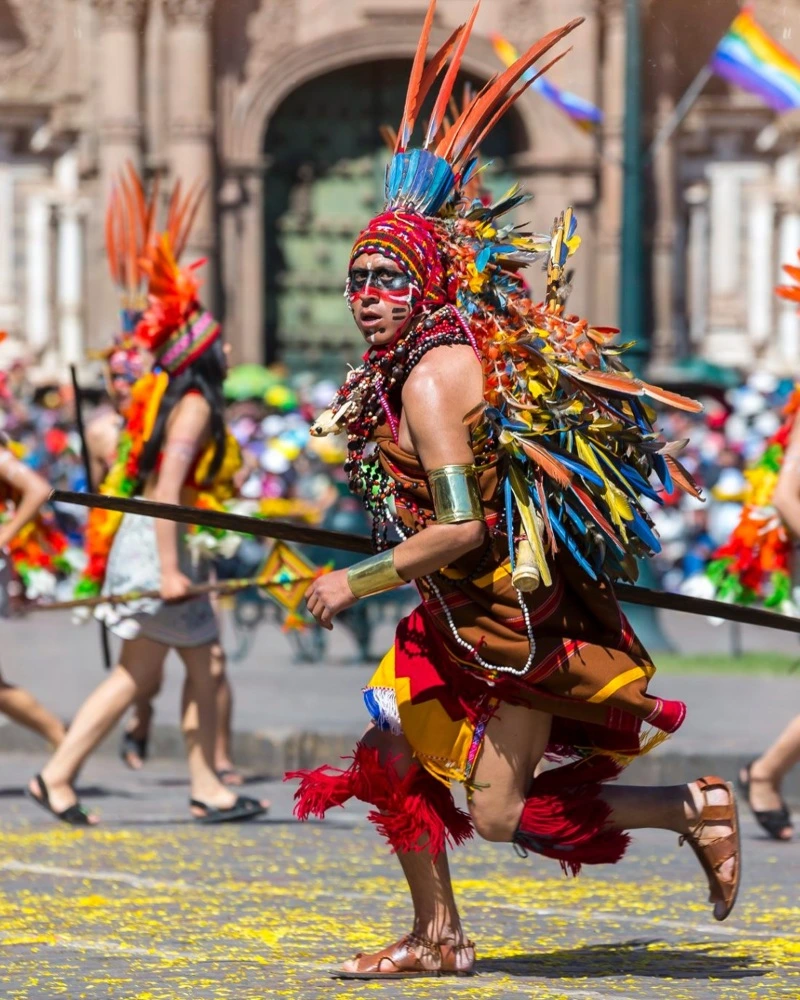
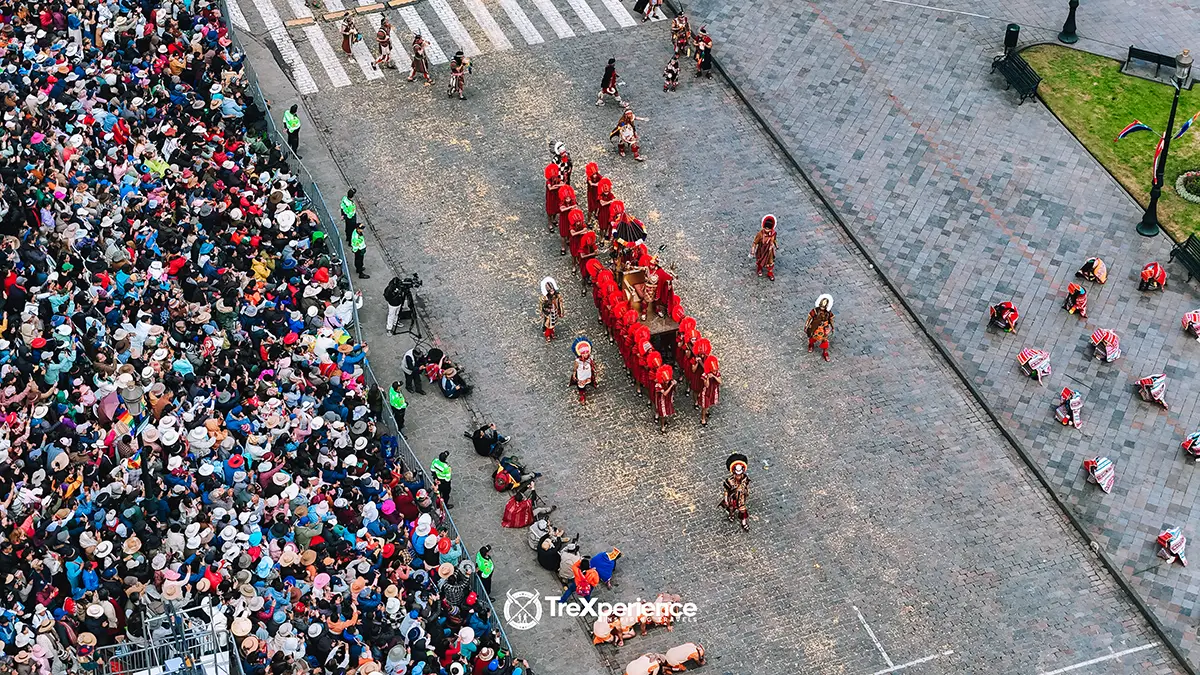
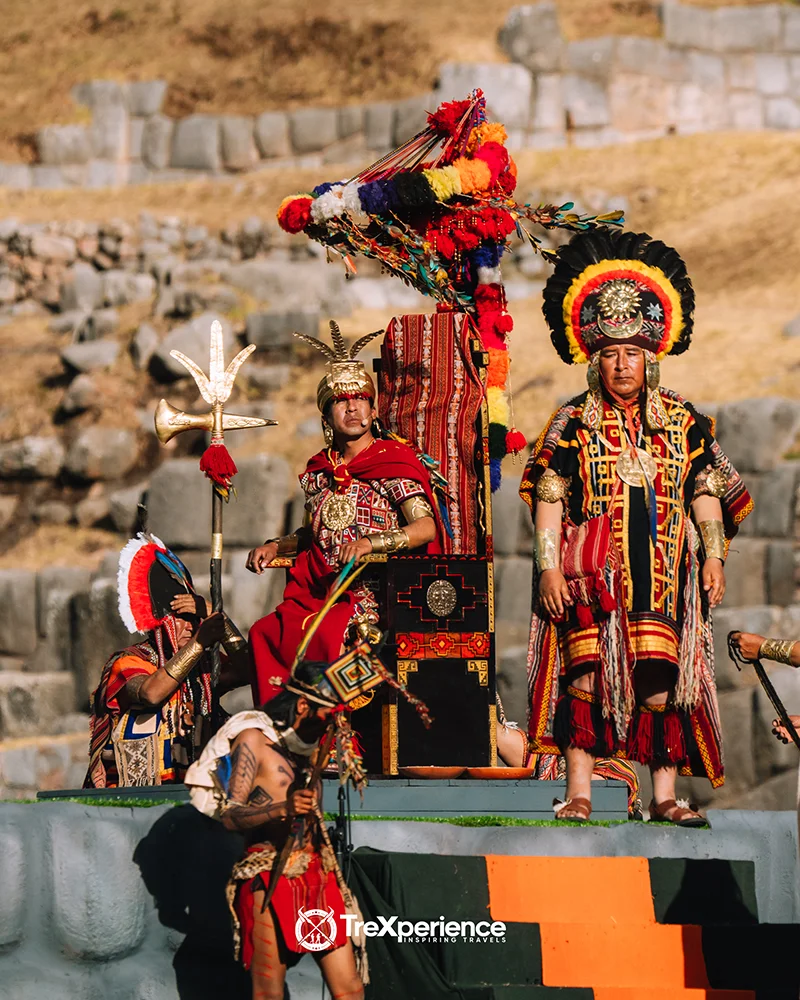
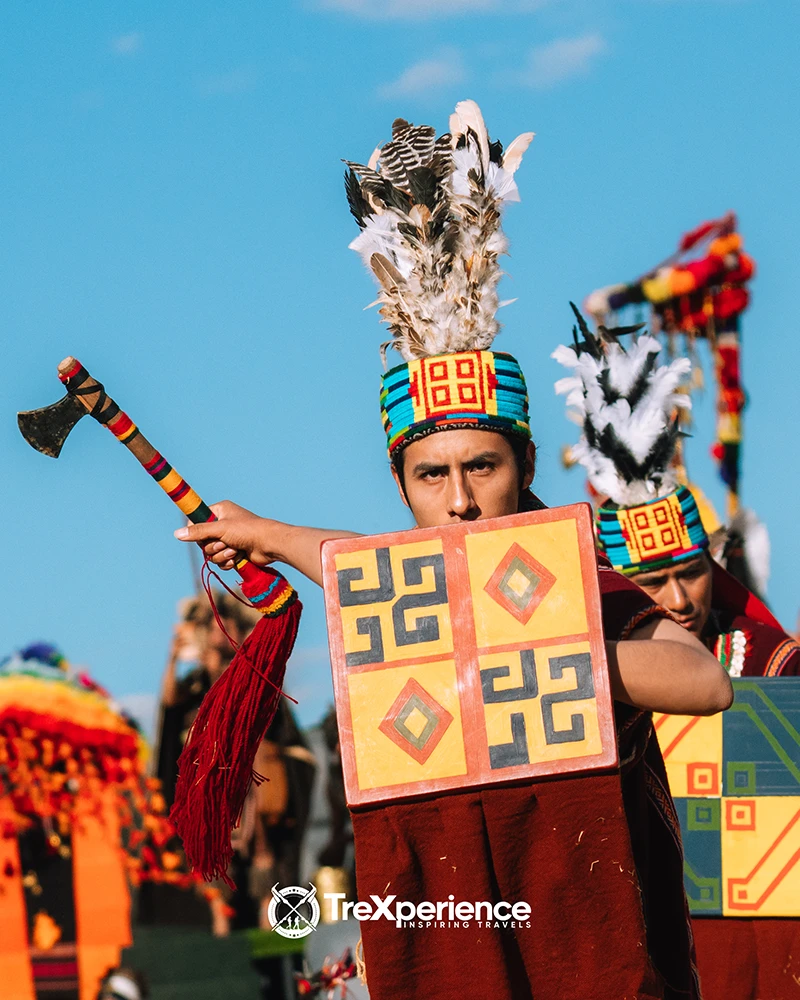
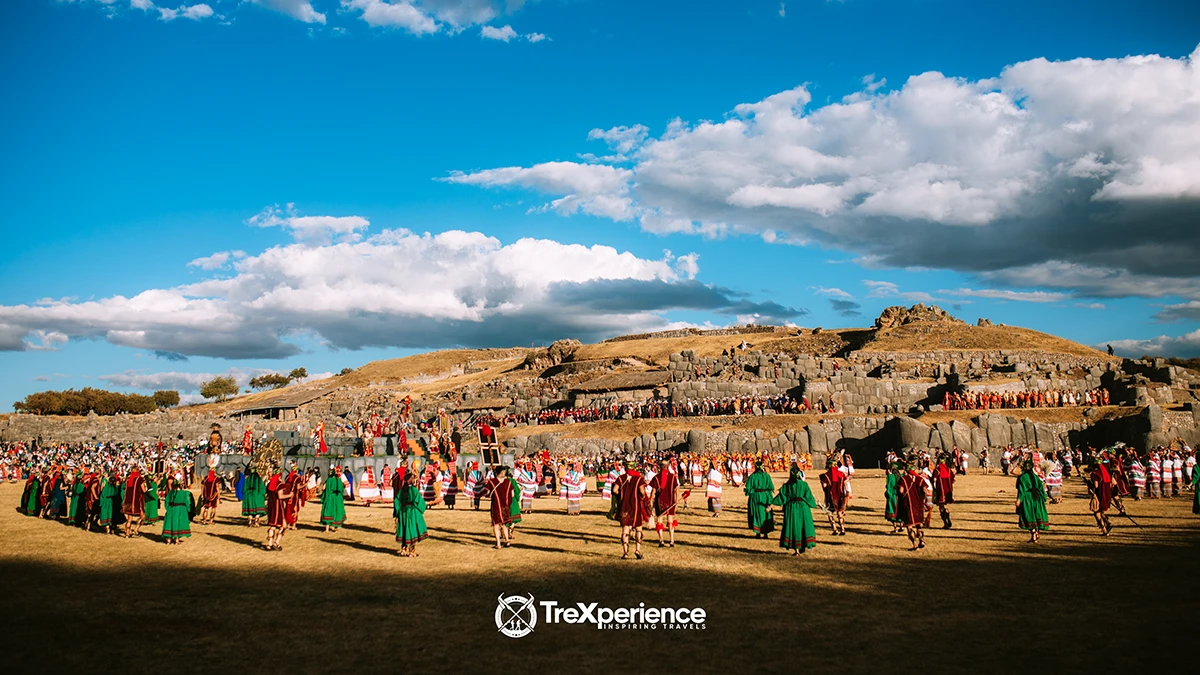
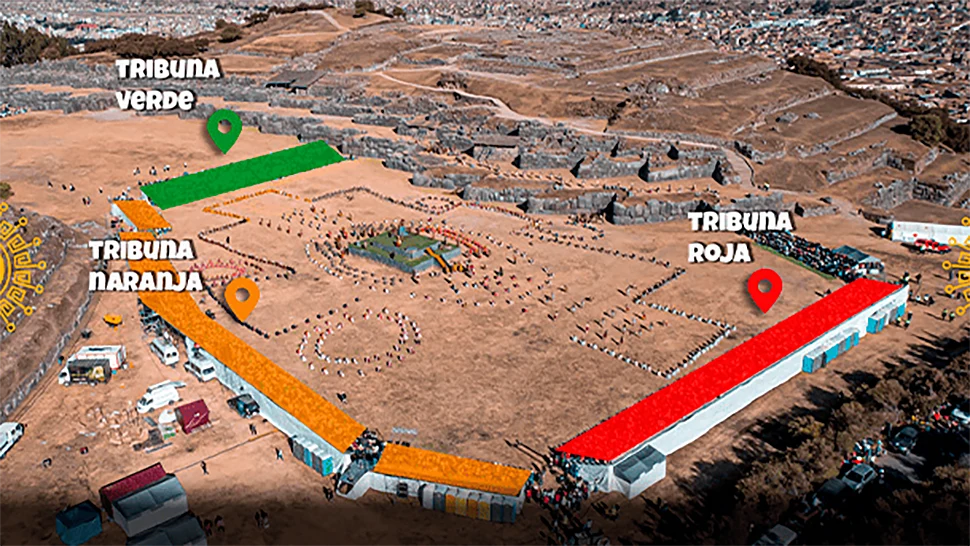
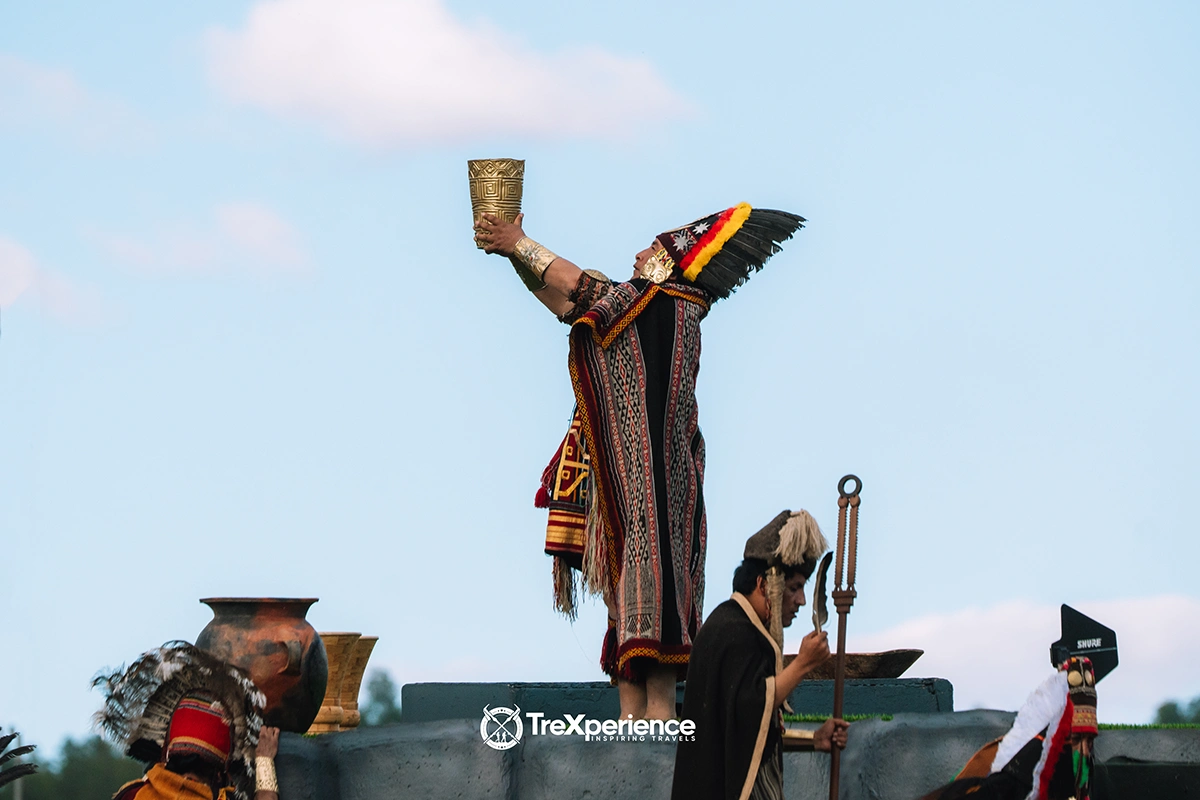
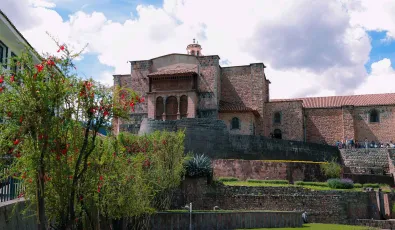
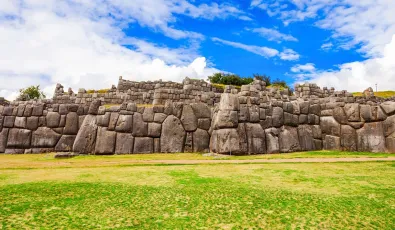
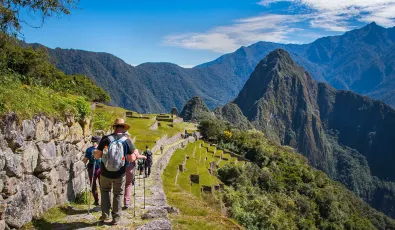

i dont know
Inta Raymi is a really cool holiday
You should be there!
it is a very cultural and worthwhile holiday. (I would definitely recommend it!)
Great info
im doing this for a school assignment
School
Same I love it
canadian
Wonderful beat ! I would like to apprentice at the same time as you amend your website, how could i subscribe for a weblog site? The account helped me a applicable deal. I have been a little bit familiar of this your broadcast offered shiny clear concept
i am doing this for a school project
i would like to know what difrent foods they eat.
It's so cool
It’s so cool
Add new comment